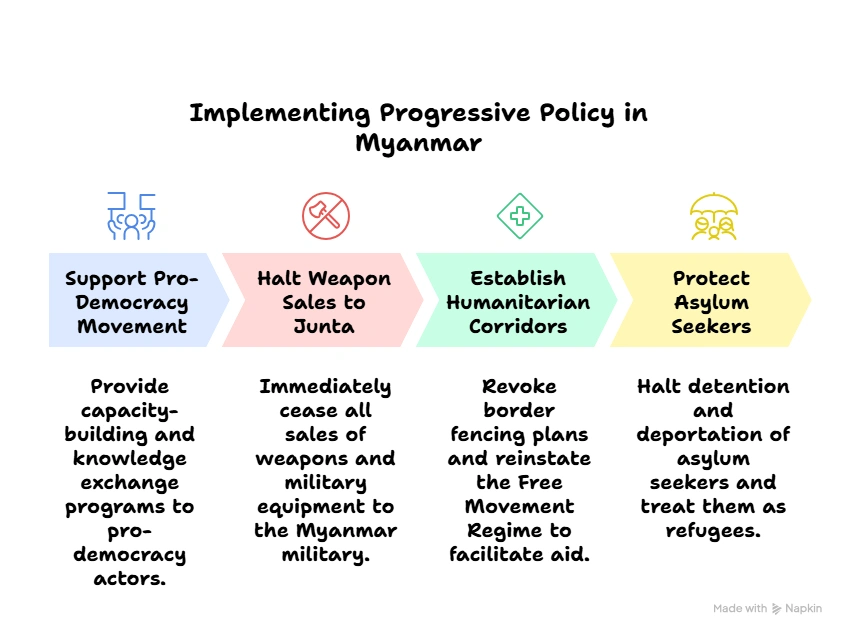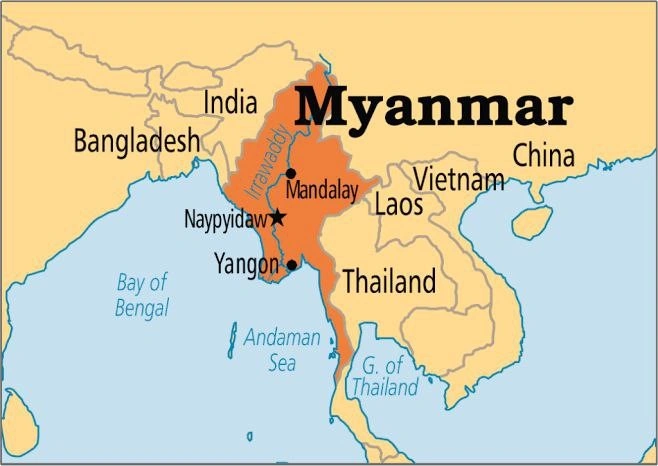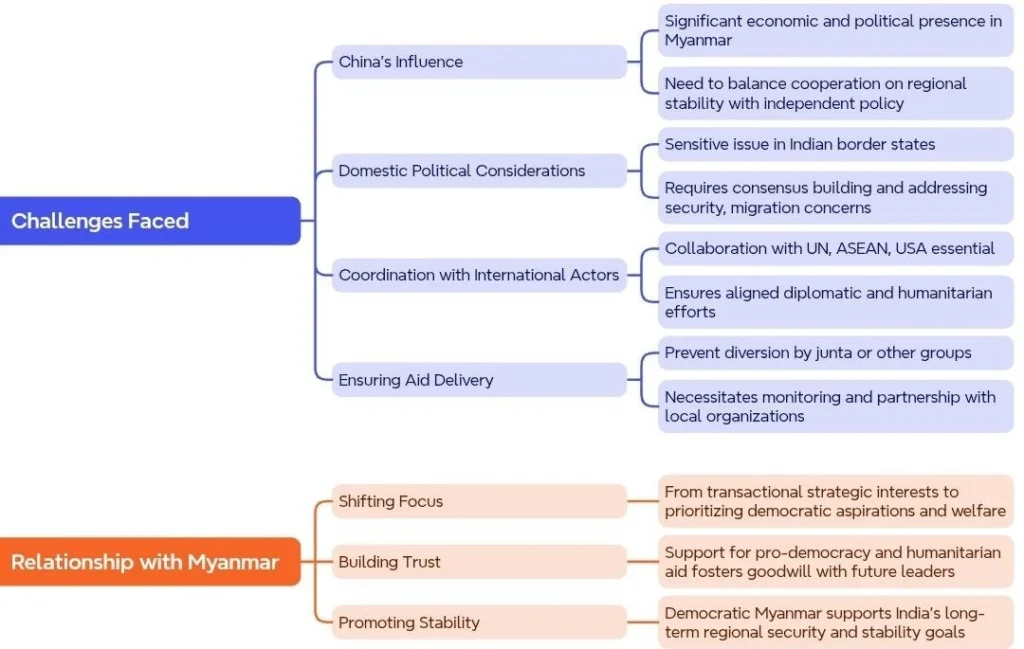Paper: GS – II, Subject: International Relations, Topic: India and Its Neighborhood, Issue: Indian policy on Myanmar.
Context:
For too long, India’s approach to Myanmar has been defined by a narrow interpretation of its strategic interests, primarily focused on security concerns and countering Chinese influence.
- This has led to the maintenance of formal relations with the military junta, despite its brutal suppression of the pro-democracy movement and widespread human rights abuses.
- However, this approach is not only morally questionable but also strategically short-sighted.
Key Takeaways:
Key Pivots: Democracy and Human Security:
A more progressive Indian policy on Myanmar should be anchored in two key principles:
- Democracy: India should leverage its position as the world’s largest democracy to support the pro-democracy movement in Myanmar.
- This includes the National Unity Government (NUG), ethnic revolutionary organizations, civil society organizations, and trade unions.
- Human Security: India should prioritize the safety and well-being of the Myanmar people, particularly those affected by the ongoing conflict.

| What is the historical background of the India-Myanmar relations? India and Myanmar have a long history of cultural, religious, and trade links that date back to ancient times. As the land of Lord Buddha, India is a country of pilgrimage for the people of Myanmar. British era: Both India and Myanmar were part of British India during colonial rule until 1935. After independence, India and Myanmar established diplomatic relations and maintained close ties. India and Myanmar signed a Treaty of Friendship in 1951. Visit of the Prime Minister in 1987 laid the foundations for a stronger relationship between India and Myanmar. In 2002, the Indian Consulate in Mandalay was reopened, and the Consulate of Myanmar was set up in Kolkata. In 2014, Myanmar became part of India’s “Neighborhood First” policy and its “Act East” policy. Strategic location: India and Myanmar share a long 1,643 km geographical land border and maritime boundary in the Bay of Bengal. Also, Myanmar is India’s gateway to South-East Asia. |

Challenges and Considerations:

Conclusion:
A progressive Indian policy on Myanmar is not only morally right but also strategically sound. By prioritizing democracy and human security, India can enhance its influence in the region, build stronger relationships with the Myanmar people, and promote a more stable and prosperous future for its neighbor. While challenges exist, they can be overcome through careful planning, coordination, and a commitment to upholding India’s values.
La Excellence IAS Academy, the best IAS coaching in Hyderabad, known for delivering quality content and conceptual clarity for UPSC 2025 preparation.
FOLLOW US ON:
◉ YouTube : https://www.youtube.com/@CivilsPrepTeam
◉ Facebook: https://www.facebook.com/LaExcellenceIAS
◉ Instagram: https://www.instagram.com/laexcellenceiasacademy/
GET IN TOUCH:
Contact us at info@laex.in, https://laex.in/contact-us/
or Call us @ +91 9052 29 2929, +91 9052 99 2929, +91 9154 24 2140
OUR BRANCHES:
Head Office: H No: 1-10-225A, Beside AEVA Fertility Center, Ashok Nagar Extension, VV Giri Nagar, Ashok Nagar, Hyderabad, 500020
Madhapur: Flat no: 301, survey no 58-60, Guttala begumpet Madhapur metro pillar: 1524, Rangareddy Hyderabad, Telangana 500081
Bangalore: Plot No: 99, 2nd floor, 80 Feet Road, Beside Poorvika Mobiles, Chandra Layout, Attiguppe, Near Vijaya Nagara, Bengaluru, 560040

